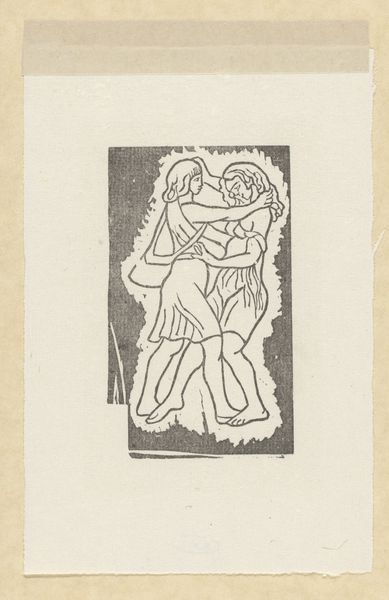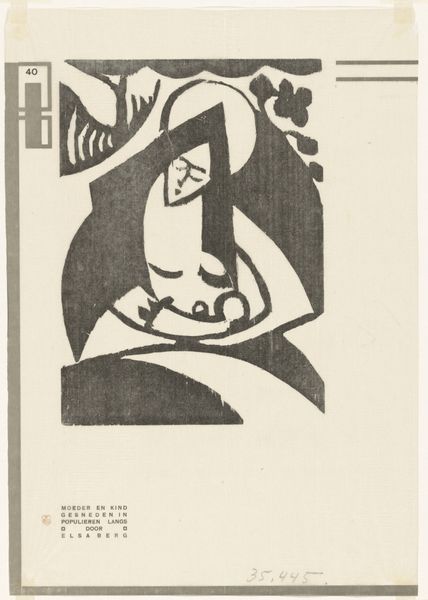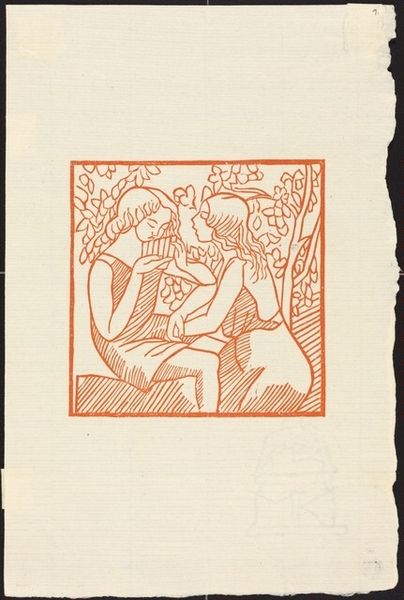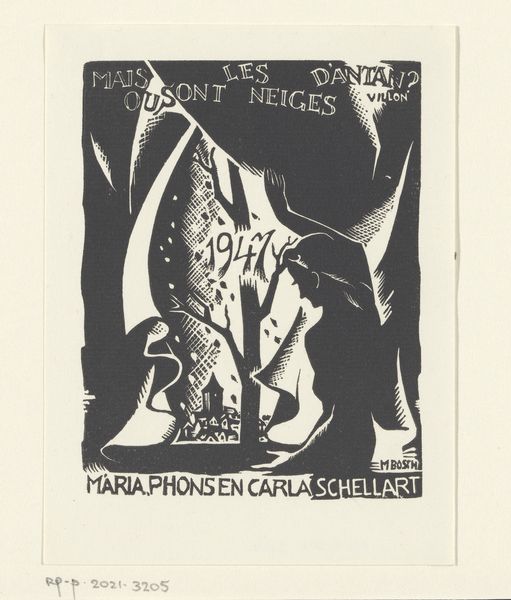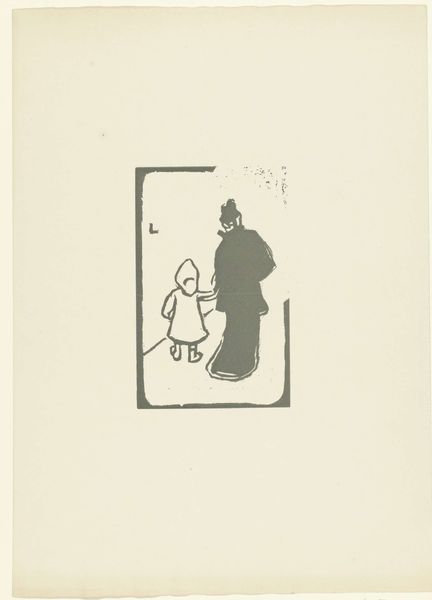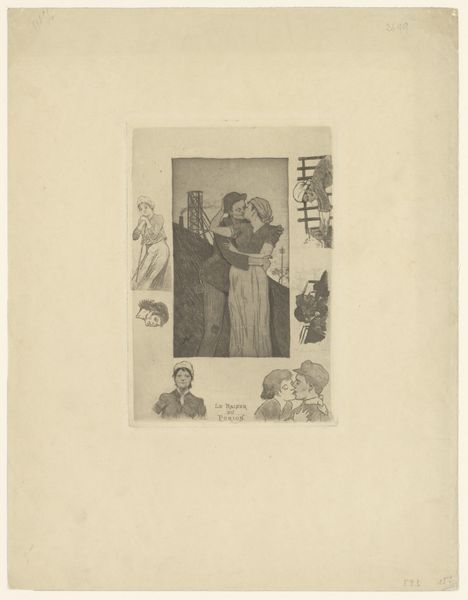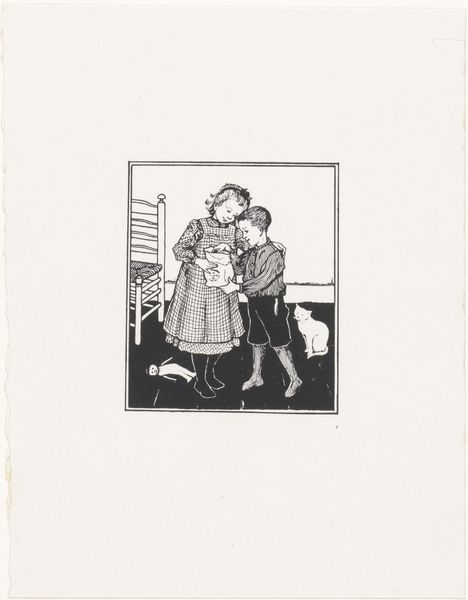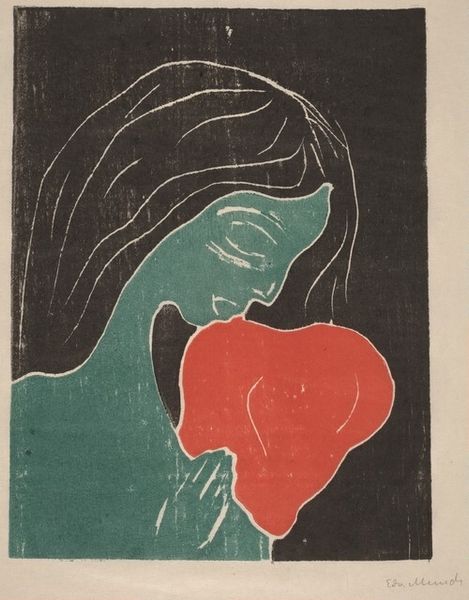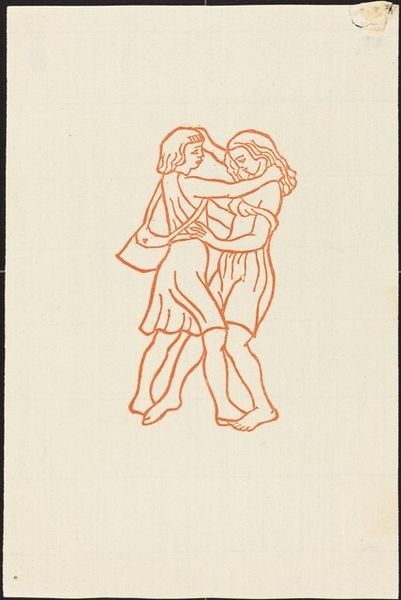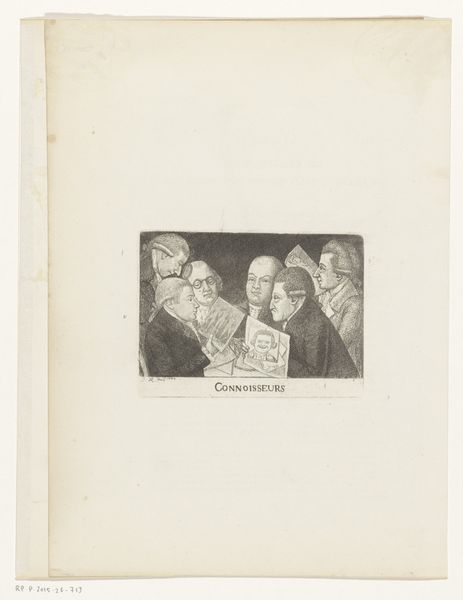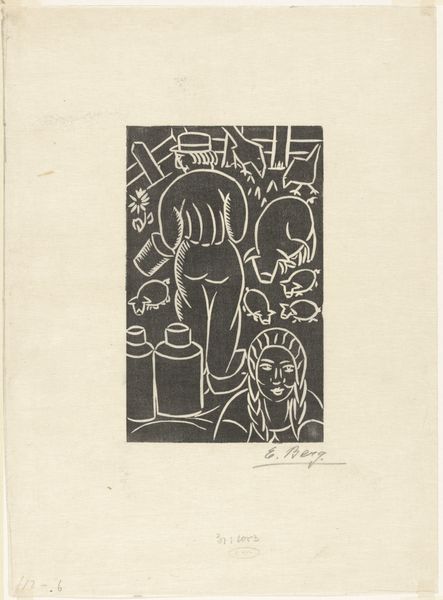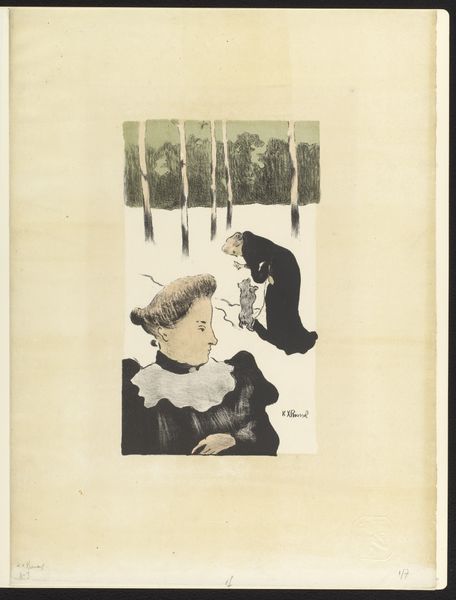
graphic-art, print, typography, poster
#
art-deco
#
graphic-art
# print
#
hand drawn type
#
figuration
#
typography
#
poster
Dimensions: height 240 mm, width 163 mm
Copyright: Rijks Museum: Open Domain
Curator: This print, titled "Advertentie voor GEM safety razor", created around 1920 by Reinier Willem Petrus de Vries, presents a striking visual from the Art Deco period. It combines graphic art and typography to advertise, of all things, a razor. What's your immediate response to this piece? Editor: I’m struck by the boldness of it, actually. The stark black silhouettes against the cream background, that blocky lettering… and then the image of a kiss right above the product name. It's daring for an advertisement, even now. Curator: The advertisement is playing on societal norms and the evolving perception of masculinity in the 1920s. Note how shaving becomes implicitly linked to romantic success. The "clean-shaven" man secures the affection of a woman. The text roughly translates to: "A kiss now you are cleanly shaven with a GEM". It implies a relationship between grooming, desire, and ultimately, power dynamics. What’s also striking is how it pushes the boundaries around the relationship between hygiene and attraction that remain today. Editor: That's true, seeing this advertisement as not merely about selling razors but reinforcing a specific idea of beauty and attraction—that resonates with a host of current critical discourse around gender, expectations, and commerce. Also, I see the small artist signature; it underscores the fine-art aspect the creator aimed for. Were prints like this displayed in a fine art setting too? How were they viewed critically? Curator: Prints like this had a double life: commercial displays, yes, and also art for the masses. Artists often sought ways to democratize art, bridging the gap between high and low culture, even as debates raged about whether commercial art could have "true" artistic merit. The GEM razor becomes a symbol of modernity, efficiency, and self-improvement that reflects socio-economic currents of the time. It signals both technological progress and shifts in the social behavior of men in that moment. Editor: So this isn't just an ad, it is really also a mirror reflecting and shaping cultural aspirations and gender norms. Fascinating how much cultural information is packaged in such a simple piece of commercial art. Curator: Indeed, examining how artists engaged with the burgeoning advertising industry tells us volumes about the development of visual culture, identity construction, and social expectations during a critical period. Editor: I'll certainly never look at a vintage ad the same way again. It’s a poignant reminder of how seemingly simple images can carry complex layers of meaning about ourselves, our history, and our ideals.
Comments
No comments
Be the first to comment and join the conversation on the ultimate creative platform.
